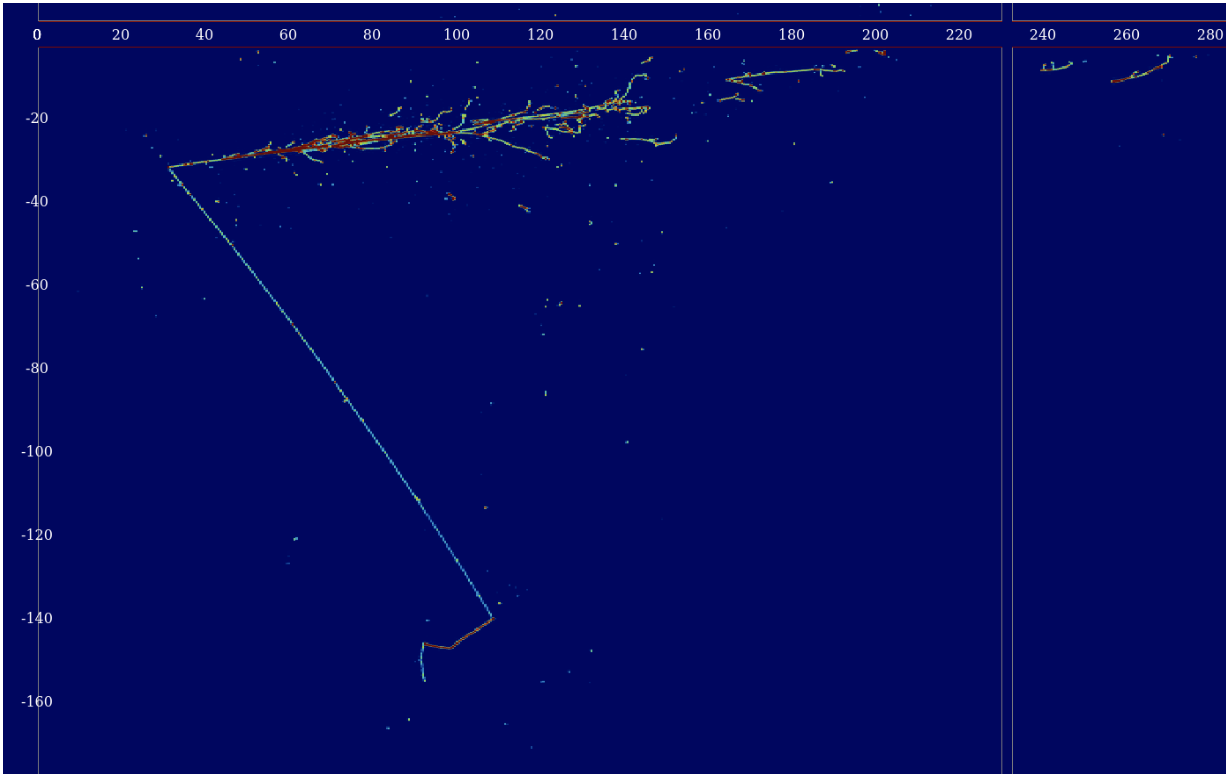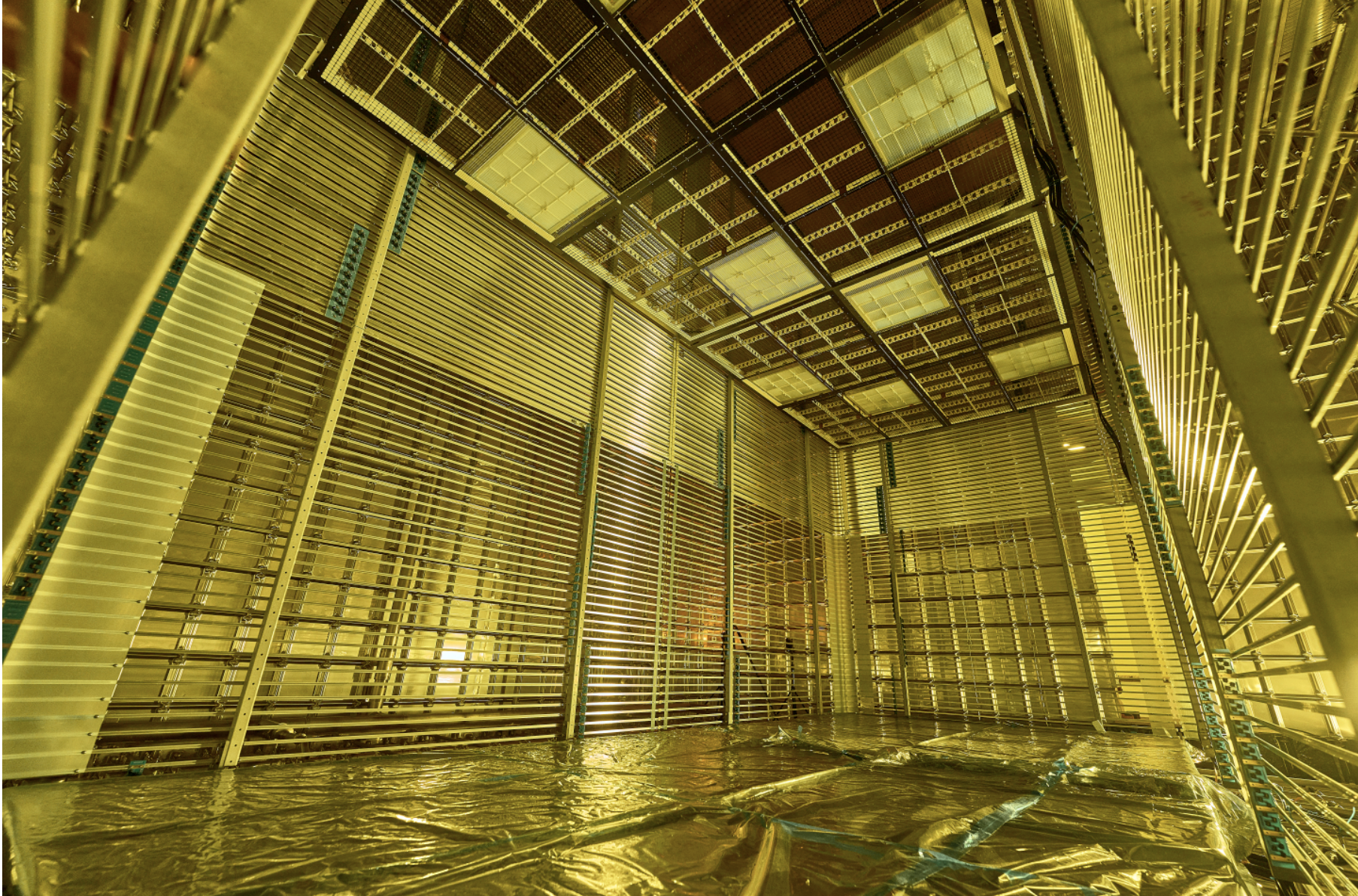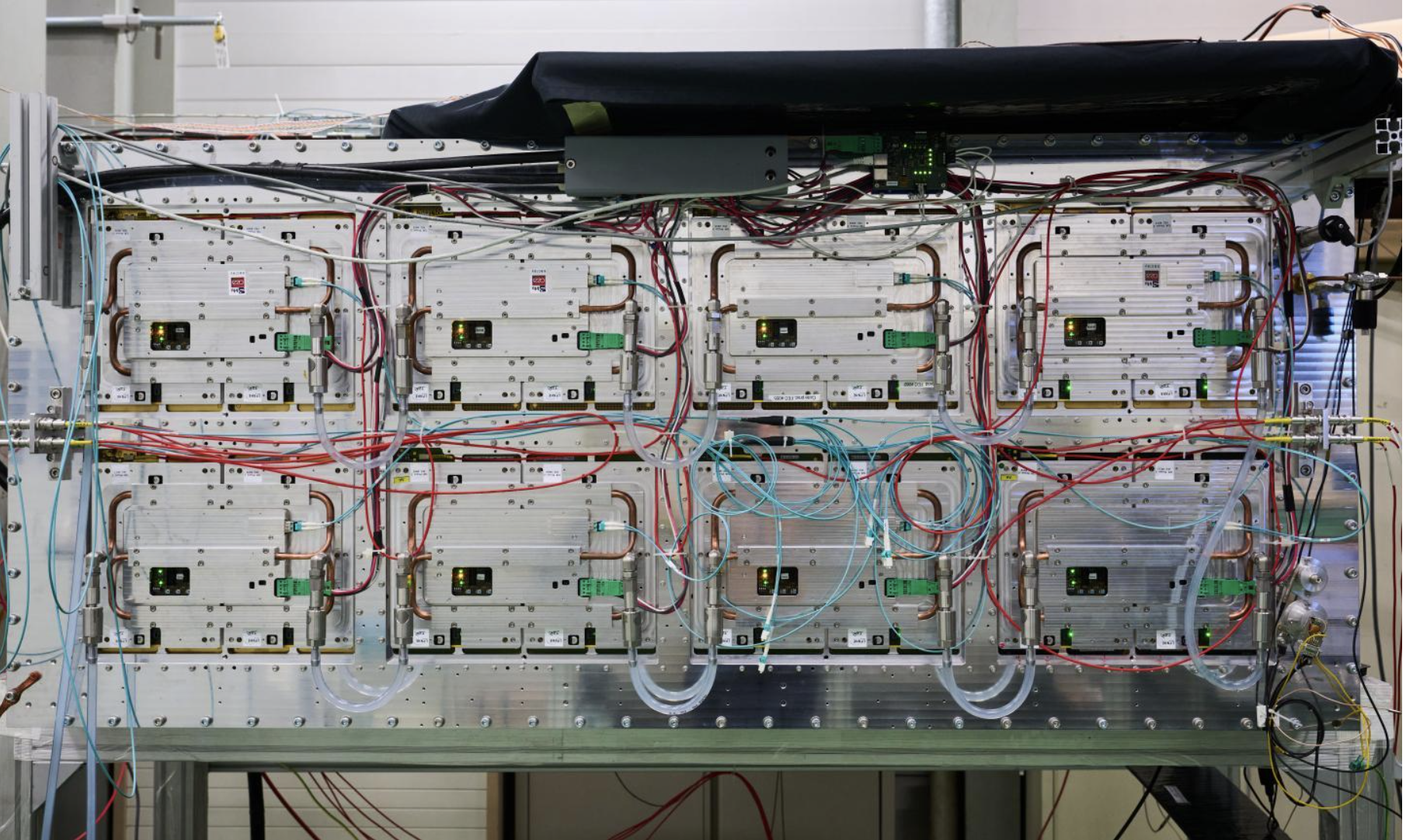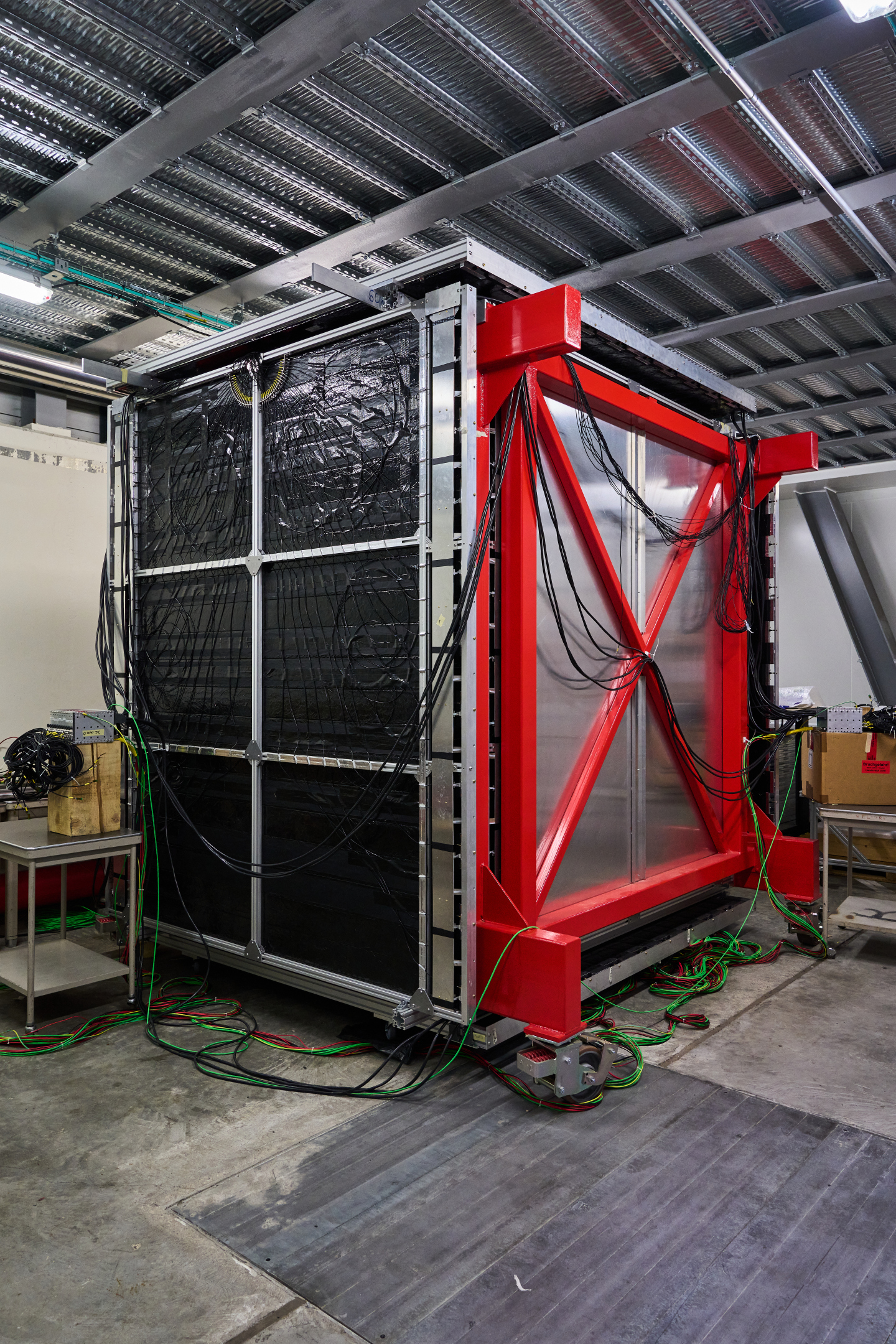DUNE and T2K gear up for next stage

In the middle of the LHC ring, at the CERN Prevessin site, lies an experimental facility dedicated to particles that are but missing momentum to the four major LHC experiments. The Neutrino Platform, built as an extension of the SPS test beam area, hosts the R&D activities for the next generation of neutrino experiments.
CERN’s involvement in neutrino physics spans multiple international collaborations in its contributions to unravelling the mysteries of these extra-light leptons. Neutrinos are one of the least studied particles in the Standard Model, despite being the most abundant massive particles in the Universe. Their mysterious nature stems from their tiny masses and the fact that they interact only through gravity and the weak nuclear force, making them exceptionally difficult to study. However, neutrinos may hold the key to fundamental questions such as why the Universe is filled with matter and not antimatter.
So-called long-baseline neutrino-oscillation experiments will help to address the nature of neutrinos by studying how they change their “flavour”, or oscillate, as they travel over a long distance, or baseline. This is practically performed by producing a beam of neutrinos and measuring it twice: once just after production at a “near” detector and again after hundreds of kilometres at a “far” detector. Neutrino oscillations are then precisely studied by comparing the flavour composition of the beam, and how it changes as a function of the neutrinos’ energies, at the two detectors. Of particular interest for current and future experiments is the study of whether such oscillations are different for neutrinos and antineutrinos, as this could hint at a new source of Charge-Parity (CP) violation that could fulfil one of the conditions necessary for matter dominance over antimatter following the Big Bang.
Since its construction in 2016, much of the activities on the Neutrino Platform have been devoted to the development of the prototype(s) for the next-generation Deep Underground Neutrino Experiment (DUNE), whose far detector will consist of four cryostats of unprecedented size: each housing 17.5 kt of liquid Argon. Given the complexity of such a project, two ~800 ton prototypes have been built and exposed to test beams to assess all technical difficulties that might arise and to characterise the DUNE detector response.
Once the first two cryostats are built, DUNE will send a beam of neutrinos from Fermi National Accelerator Laboratory (Fermilab) near Chicago, Illinois, over a distance of more than 1300 kilometres through the Earth to neutrino detectors located 1.5 km underground at the Sanford Underground Research Facility (SURF) in Sanford, South Dakota. The massive far detectors are “Liquid Argon Time Projection Chambers” (LArTPCs), a technology already employed in other neutrino experiments such as ICARUS, which also has a strong connection to the Neutrino Platform.
As neutrinos interact with Argon nuclei inside the TPCs, they generate detectable particles (charged ones and photons), which are observed through ionisation and scintillation processes. In the former, these particles strip electrons from atoms surrounding them which are then drifted, using a strong electric field, onto detectors on the walls of the TPC. In the latter, the scintillation light produced is then seen by a series of photo sensors. The combination of these two signals allows the formation of almost photographic images of particles generated by neutrino interactions, manifesting as tracks that appear to materialise out of nowhere.

The horizontal axis is the z-axis (beam direction) in the detector. The vertical axis corresponds to drift time (x position in the detector). Both axes are labeled in cm. Source: official DUNE plots (from MC data).
The protoDUNEs have been built in the North Area to make use of the SPS beam to create beams of hadrons and leptons at well calibrated energies. In 2018, protoDUNE began its first run, operating both cryostats for the first time and recording over four million particle interactions, providing important information about the technical challenges associated with DUNE and crucially demonstrated that the experiment was ready for construction. Since January 2023, the Neutrino Platform has been preparing for protoDUNE’s second run. Successful operations of these new detector designs will give the final green light to the mass production of the components for the actual experiment. The two cryostats will be filled with liquid Argon next winter and are expected to begin the data taking next spring.

The Neutrino Platform also houses an assembly station for the Tokai to Kamioka (T2K) experiment, one of the two currently operating long-baseline neutrino experiments. T2K has been operating for over a decade in Japan, sending beams of neutrinos from Tokai on the East coast over a distance of 295 km to the Nobel-prize-winning Super-Kamiokande detector in Kamioka, close to the West coast. In 2020, T2K provided the first hint of CP violation in the lepton sector. One of its Near Detectors, ND280, is currently undergoing a major upgrade, which the T2K collaboration hopes will allow it to reduce important systematic uncertainties in its measurements of neutrino oscillations. The construction and testing of much of the ND280 upgrade is taking place at CERN at, or in coordination with, the Neutrino Platform.
The ND280 upgrade consists of multiple sub detectors. Two new TPCs (yes, the same concept as DUNE, but using gaseous instead of liquid Argon) are being prepared, of which one is already installed in Japan while the second is being finalised. Much of the TPC development and testing is taking place at CERN; in particular, the actual detectors installed on the TPC, called Encapsulated Resistive Anode Micromegas (ERAMs), are entirely built at CERN. This is the first time this technology is used in a full scale experiment, after an extensive characterization of their response carried out in our Meyrin site. A new gas system for the two new and three “old” TPCs was additionally entirely developed and tested at CERN by the EP-DT gas team, before being successfully installed in Japan last spring. Beyond the TPCs, an additional Time-of-Flight (TOF) detector has been completely assembled and tested at CERN. This consists of six plastic scintillator planes with exceptional timing resolutions that will be used to determine whether particles seen in the detector are entering or leaving.

A time projection chamber for the ND280 detector, built at CERN for the T2K experiment (Image: CERN).

Fully assembled TOF detector at the Neutrino Platform
Most of the ND280 Upgrade has already been installed in Japan; at the moment of publication of this article the new detectors are taking their first data with a neutrino beam.The upgrade will allow precise studies of neutrino interaction properties for T2K before also serving its successor experiment, known as Hyper-Kamiokande.
